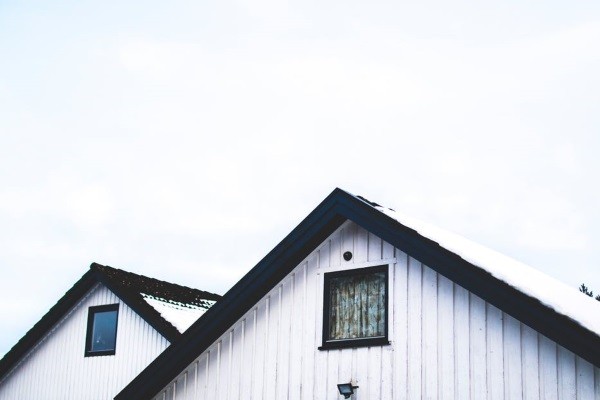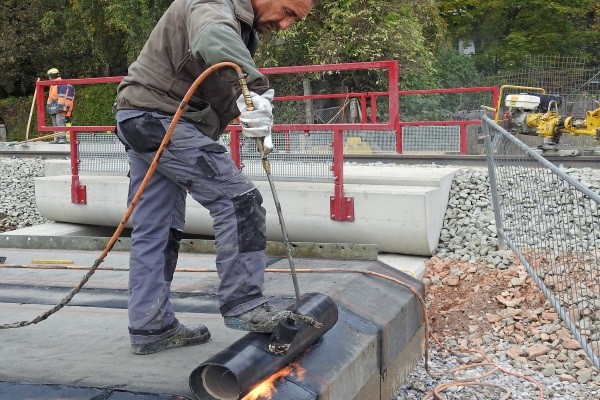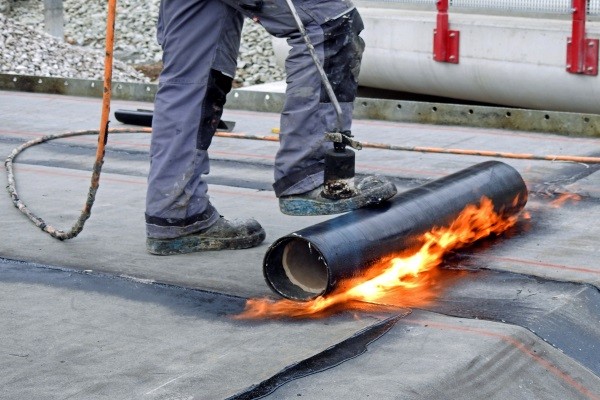Most homeowners mistake rubber roof underlayment as a modified version of rubber roofs. However, EPDM roofs are a single-ply membrane functioning as both the external roof and underlayment.
Most contractors will recommend the installation of underlayment to prolong the lifespan of your roof. In consequence, it will lengthen the longevity of the entire property as well.
Your roof is the first line of defense against the elements. Additionally, roofs will withstand multiple hailstorms with proper installation. In this light, the underlayment is the second and final line of defense if your roofing material sustains severe damage.
Do you need roofing underlayment? Find out more about them here.
What is Rubber Roof Underlayment?
Rubberized asphalt underlayment is only one example of the protective material underneath your external roof. In fact, their manufacturing process is similar to the production of EPDM roofs.
Most manufacturers use recycled rubber materials sourced from items such as worn-out road tires, discarded boots, and tubing. Then, they add slate and sawdust in the manufacturing process.
However, rubber roof underlayment is more expensive than EPDM roofs. Manufacturers add higher percentages of asphalt, polyethylene, and polyester to enhance its resistance and durability.
In turn, the process enhances its heat resistance. This makes it useful for many roofing materials such as metal and shingle roofs.
Why Do You Need It?
Protects Internal Roof Against Moisture
Rubber roof underlayment catches stray water and moisture missed by shingle or metal roofs. In sloped roofs, the underlayment directs the water straight into the gutter system for proper disposal.
This simple yet effective function prevents roof mold and mildew growth. In addition, it prevents damage to your internal roof during heavy and consistent rainstorms.
For low-sloped or flat-roofed properties, rubber roof underlayment prevents severe ponding damages. Consequently, it saves property owners from thousands needed in complete roof replacement.

Improves Roof Fire Resistance
Due to its high-heat resistance manufacturing, rubber roof underlayment will not catch fire. Additionally, its resistance helps reduce property fire development in an incident.
Rubber roof underlayment has the same grade as fireproof rubber. Manufacturers of sofa, armchair, and insulation use fireproof rubber during their production process. Even passenger train cars use the material because of its insulating and fire-retarding capabilities.
Therefore, rubberized asphalt underlayment provides both anti-leak functions and fire-retarding capabilities too.
Preserves the Lifespan of Your Property
Your roof completes the five protective barriers of a conventional shelter. Roofing underlayment prolongs the lifespan of your roof. Therefore, it preserves the strength of the entire barrier consisting of your roof and the external walls of your property.
Rubberized asphalt is a material with decades in lifespan. It can accompany your roof until it will need replacement. In fact, it has enough durability to support a new roof.
Three Other Roofing Underlayment Materials
Aside from rubberized asphalt, three other roof underlayment materials also exist.
Roofing Felt
Many contractors recommended roofing felt or asphalt-saturated felt during the 90s. It was cost-effective and highly dependable in deflecting leaks and internal ceiling protection.
Manufacturers of roofing felt use different blends of cellulose during production. Then, they add a hybrid mix of polyester, bitumen, or asphalt.
However, felt is not waterproof but only water-resistant. Most manufacturers display its permeable rating. This figure dictates the water molecule amount the material allows to pass. Thicker materials work better in repelling water.
Water vapor dissipation is the reason roofing felt and other underlayment materials have different permeability rates. Without breatheability, internal moisture will build and cause massive roofing damage from the inside.

Asphalt-Saturated Felt
Roofing felt is lightweight and durable on its own. However, properties in heavy rainfall zones require better protection against external moisture. In some cases, they require underlayment materials with the same lightness as felt at the same time.
Manufacturers produce asphalt-saturated felt by infusing standard roofing felt with adequate asphalt amounts. In turn, this produces a non-permeable, insulating, and UV protecting material.
Synthetic Underlayment
Asphalt hybrids including rubber roof underlayment materials are durable and cost effective solutions. In addition to their ranks are non-bitumen synthetic underlayments.
Similar to synthetic roofing materials, non-bitumen synthetic roofs use plastics such as polypropylene or polyethylene. Similar to asphalt-saturated felt, they are lightweight yet offer great durability and longevity.
Non-bitumen synthetics will block all possible external moisture and leaks from the internal ceiling. In addition, they improve the durability and UV-protecting capacity of existing roofing material.
When Do You Need to Replace Your Rubber Roof Underlayment?
Over time, rubber roof underlayment and other underlayment materials will fail to function properly. Unfortunately, you cannot regularly dismantle your roof to inspect them.
The best way is to look for these signs.
Discolored Ceilings
Discolored ceilings are clear signs leaks have compromised your roofing underlayment material. If they expose themselves consistently to moisture, ponding happens even in underlayments.
Similar to their effects with low-slope roofs, the water pressure will push until it penetrates the material. Therefore, water seeping to the internal ceiling will discolor your ceiling and introduce leaks inside the property.

High Concentration of Mold
If everyone in your home is feeling sick or suffering from nasal problems, it is possible your house has a high concentration of mold. Unfortunately, this is a clear sign moisture has housed in its underlayment material too.
Roofing felt plays the best host for molds, mildew and fungi. Its permeability allows moisture to seep into the wooden roofing joists. With enough nourishment and moisture, molds and fungi will grow. Allow contractors to test your home for mold growth to guarantee the health and safety of your household.

Conclusion
Rubber roof underlayment is an essential roofing part. Aside from the durability of your external roof, these materials catch missed moisture to provide optimum property protection.
However, to maximize their capacities, property owners must use trusted and experienced roofing contractors for installation and maintenance purposes.

